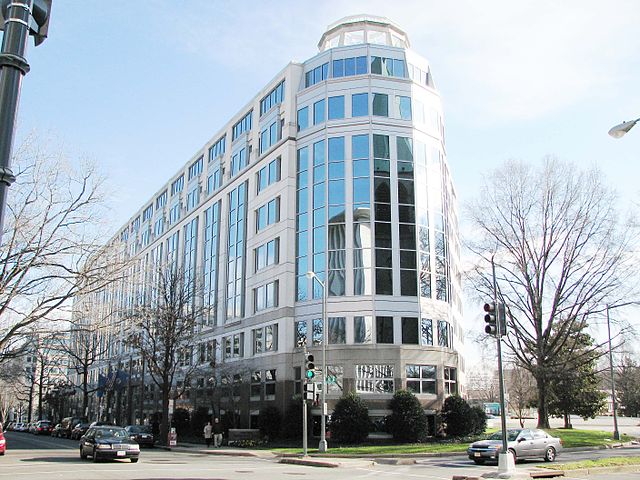“Universities faced with enforcement decisions have rarely chosen to bring their claims in the ITC, despite its many advantages. Yet, the legislative history of the statute shows that the ITC was designed to afford relief to universities.”
 Many universities recognize the value of their patent portfolios and the need to protect their intellectual property rights from unlicensed and unfair use. When licensing negotiations break down, universities generally seek to enforce their rights in U.S. district courts, but overlook a potentially more favorable forum: the United States International Trade Commission (ITC). The ITC is a unique patent forum with experienced judges, defined patent rules, and statutory mandates to provide a timely resolution. More importantly, the ITC was designed protect U.S. industries, including the research and development performed at universities.
Many universities recognize the value of their patent portfolios and the need to protect their intellectual property rights from unlicensed and unfair use. When licensing negotiations break down, universities generally seek to enforce their rights in U.S. district courts, but overlook a potentially more favorable forum: the United States International Trade Commission (ITC). The ITC is a unique patent forum with experienced judges, defined patent rules, and statutory mandates to provide a timely resolution. More importantly, the ITC was designed protect U.S. industries, including the research and development performed at universities.
This is not a hypothetical exercise: one university recently utilized the ITC, blazing a path that others can follow. As explained below, more universities should follow suit.
Universities are Centers of Innovation
Many people associate technology innovation with Silicon Valley and large technology companies. But innovation is often driven by the research and development performed at universities. Universities research, create, and develop groundbreaking ideas that add to the global sphere of knowledge. These research projects are on the cutting edge of emerging technology, and often create libraries of patents for professors and universities at large.
Patents are a valuable part of any organization’s intellectual property portfolio, and their value can help develop and extend an institution’s research and development goals through licensing and assertion. Most universities have IP policies that exist to protect the rights and interests of the faculty, researchers, and students, while facilitating productive industry relations and ensuring the university and inventors receive fair compensation for the value they create.
In recent years, many universities have found that patent litigation is a necessary part of protecting their intellectual property rights. For example, in 2021 alone, Northwestern, NYU, Purdue, West Virginia University, and the University of Pittsburgh all filed patent litigation cases in various district courts in the United States, for a total of at least 13 university-owned patent litigation cases nationwide. See, e.g., Northwestern Univ. v. Mitsubishi Elec. Corp; N.Y. Univ. v. ResMed, Inc.; Trs. of Purdue Univ. v. STMicroelectronics N.V.; W.V. Univ. Board of Governors v. Plasma Igniter, LLC; Univ. of Pittsburgh – of the Commonwealth System of Higher Educ. v. Kyro. Inc. These cases continue the recent movement of universities defending their patent rights through litigation, including Carnegie-Mellon University v. Marvell, which resulted in compensation $750 million for the university.
Universities Have Underutilized the Benefits of the ITC
Despite this increasing trend of patent enforcement by universities, the ITC remains an underutilized forum. This may be a missed opportunity for many universities who would have otherwise benefitted from the ITC’s unique advantages.
The level of experience with patent cases and the attention given to these types of cases varies widely among district courts. While some district courts handle many patent cases and have well defined patent rules, many others handle few cases and have limited, if any, specialized rules for patent cases. District court judges also divide their time between various criminal and civil matters and may have crowded dockets that limit a judge’s ability to learn the technology at issue and can lead to slow and expensive litigation.
The ITC, on the other hand, is a specialized forum that routinely handles patent litigation cases, which are referred to as investigations. See 19 U.S.C. § 1337 (“Section 337”). The ITC has a long history of assisting U.S. businesses by preventing the importation and sale of infringing products. The primary differences between the ITC and district court are the relief available (injunctive, but no monetary damages) and the unique “domestic industry requirement,” detailed below.
The ITC is a powerful venue to prevent patent infringement. The relief at the ITC is akin to an injunction, which is a remedy that is increasingly difficult to obtain in district court patent litigation. See eBay Inc. v. MercExchange, L.L.C. The ITC has the authority to exclude or seize infringing products at the border through U.S. Customs and Border Patrol. The ITC can also issue cease and desist orders against specific actions, such as importing, selling for importation, or selling after importation goods subject to an exclusion order. This remedy allows complainants (i.e., patent owners) to keep infringing products from entering the country and existing infringing products from being sold.
Complainants also benefit from the enforcement powers of the ITC. If a foreign manufacturer chooses not to participate in the ITC investigation, the ITC continues without them and can issue a default exclusion order. While a default in district court would require a plaintiff to enforce a finding of patent infringement through asset seizure, an exclusion order issued by the ITC is enforced by the U.S. Customs and Border Patrol.
Additionally, one of the primary benefits of the ITC is the speed to resolution. By statutory mandate, the ITC must “conclude any investigation and make its determination … at the earliest practical time after” the investigation begins. ITC investigations are typically resolved within about 18 months from filing, whereas patent infringement claims in Federal Court average four years. Additionally, because of this speed requirement, the ITC is unlikely to stay or slow the investigation if the respondent (defendant) files a petition for inter partes review (“IPR”). The ITC has rarely, if ever, stayed an investigation because a respondent filed an IPR on an asserted patent. In district court, on the other hand, IPRs are a common defense and means of delay implemented by defendants, resulting in an average delay of at least 12 months.
Universities Can Seek Relief at the ITC
As defined by the statute, the ITC is available as a forum to all U.S. patent owners that can satisfy the domestic industry requirement. On its face, the language of the domestic industry requirement may not seem to account for universities. However, a closer look at the history and language of the statute shows that universities were specifically identified as institutions that should be able to seek relief at the ITC.
The statute states that the ITC is available to protect patent and other intellectual property rights “only if an industry in the United States, relating to the articles protected by the patent, copyright, trademark, mask work, or design concerned, exists or is in the process of being established.” The statute goes on to define three separate means by which a complainant can show the existence of a domestic industry, commonly referred to as “Prong A,” “Prong B,” and “Prong C”:
[A]n industry in the United States shall be considered to exist if there is in the United States, with respect to the articles protected by the patent, copyright, trademark, mask work, or design concerned—
(A) significant investment in plant and equipment;
(B) significant employment of labor or capital; or
(C) substantial investment in its exploitation, including engineering, research and development, or licensing.
At first glance, many may not believe that universities are able to meet this requirement.
In fact, however, Congress specifically intended for the ITC to be available to universities. For example, the legislative history behind the 1988 amendments to the statute shows that in 1986, Representative Kastenmeier proposed, in part to:
modify the domestic industry requirement by allowing complaints to be filed by persons who have made a substantial investment in facilities or activities relating to the exploitation of a patent, copyright, trademark, or mask work, including research and development, licensing, sales, and marketing. This adjustment will assure continued access to the ITC by entities, including universities, who have a substantial stake in the United States. … Finally, such a change will enable universities and small businesses who do not have the capital to actually make the good in the United States to still have access to the ITC forum for the protection of their rights.
In response, Congress amended the domestic industry requirement in 1988, including by adding Prong (C), above.
Understanding The Domestic Industry Requirement
Bearing the legislative history in mind, universities are well positioned to satisfy the domestic industry requirement under any of the three prongs. See Certain Solid State Storage Drives, Stacked Electronics Components, and Prods. Containing Same, Inv. No. 337-TA-1097.
Domestic Industry Under Prong C
Congress amended Prong C specifically to ensure that universities and other research entities could seek relief at the ITC. Under Prong C, a complainant can meet the domestic industry requirement through a showing of substantial investment in the exploitation of the asserted patent(s). As exemplified in the statute, this exploitation typically consists of either research and development expenses or licensing expenses, but can conceivably include any investments related to making use of the patent. The only requirements for Prong C are that these investments have a “nexus” to the patent, and that they are related to articles that practice the patent.
The nexus requirement simply requires a showing that the investments generally relate to technology implementing the claimed invention. For example, the Commission has noted that efforts to improve, develop, or take advantage of the patented technology are cognizable investments in its exploitation. Certain Integrated Circuit Chips and Prods. Containing the Same, Inv. 337-TA-859, Comm’n Op. at 39 (Aug. 22, 2014).
More specifically, one ALJ recently found that the University of California’s investments in engineering, research, and development related to “epitaxial growth, chip fabrication, and transparent packaging” were sufficiently related to patents claiming LED lights. See Certain Filament Light-Emitting Diodes and Prods. Containing Same (II), Inv. No. 337-TA-1220, Initial Determination at 216-20 (Nov. 19, 2021).
The second requirement, that the investments are related to articles that practice the patent, is generally met by a showing that there is a physical product or device that embodies or practices the patent. This is a flexible standard: the Commission looks at the “realities of the marketplace” to decide what “article” is protected by the patent, including, e.g., “whether the article is an entire device or a component thereof, or a downstream product containing the patented component, depending on the facts presented[.]” Certain Integrated Circuit Chips and Prods. Containing the Same, Inv. 337-TA-859, Comm’n Op. at 36 (Aug. 22, 2014).
Notably, the Commission has previously found that the article need not be a commercially available product; rather, the term article “is sufficiently capacious to embrace pre-commercial or non-commercial items.” Certain Non-Volatile Memory Devices, Inv. No. 337-TA-1046, Comm’n Op. at 41 (October 26, 2018).
Finally, Prong C can also be met by expenditures related to attempting to license the asserted patent(s). As with all domestic industry investments, these expenditures can be relied upon either standing alone or together with other cognizable activities. Generally speaking, a licensing domestic industry can be shown through substantial investments in a licensing program directed to licensing the asserted patents (including together with other portfolio patents) to others in the industry, so long as the aim is to encourage adoption and development of articles protected by the patents. See, e.g., Motiva, LLC v. ITC, 716 F.3d 596, 600-01 (Fed. Cir. 2013).
Most universities with significant research and intellectual property operations maintain a “Technology Transfer” office, or something similar, dedicated to the securing and licensing of university-created intellectual property. The expenses associated with such licensing offices could be asserted as a domestic industry basis.
Domestic Industry Under Prongs A and B
Universities can also establish a domestic industry under Prongs A or B. See discussion of Certain Filament Light-Emitting Diodes and Prods. Containing Same (II), Inv. No. 337-TA-1220, infra. Under these prongs, a complainant can establish a domestic industry by showing that it has made significant investments in either plant and equipment (Prong A), or labor and capital (Prong B), that relate to articles protected by the patent. Generally speaking, Prong A relates to expenses associated with securing, equipping, and maintaining facility space and the equipment therein, while Prong B relates to expenses associated with workers (labor, or human capital) and the use of capital equipment or buildings; there is thus overlap in what can constitute an investment under these prongs. Notably, these investments are not limited to manufacturing or any other specific activity – they can even be expenses associated with research and development. See discussion of Certain Filament Light-Emitting Diodes and Prods. Containing Same (II), Inv. No. 337-TA-1220, infra. Rather, the only requirement is that these investments be related to articles that practice the patents. As detailed above, this is a flexible standard that does not require commercial products.
‘Significant’ and ‘Substantial’ Investments
Most scholarship and litigation involving domestic industry revolves around whether the investments are “significant” under Prongs A and B or “substantial” under Prong C. Without wading into this debate, it is enough to note that the test is also a flexible, context-dependent inquiry, with no minimum threshold that must be met. Rather, the investments must be reasonably quantified (i.e., dollar figures, hours, etc.), and then qualitatively analyzed to determine their relative importance to the articles that practice the patent, taking into account other facts, such as the operations of the complainant and the nature of the industry. There is no reason that a university’s investments could not meet this standard, especially since the statute was specifically designed to allow universities to meet it. See, e.g., Certain Filament Light-Emitting Diodes and Prods. Containing Same (II), Inv. No. 337-TA-1220, Initial Determination at 220 (Nov. 19, 2021).
Domestic Industries Through Licensees
Importantly, even if a university cannot establish the domestic industry requirement through its own activities, it can also rely on the domestic activities of its patent licensees. Complainants in ITC investigations often include patent owners that, for various reasons, cannot or choose not to rely on their own domestic activities. Instead, it is well established that complainants can rely on the investments of licensees to the asserted patents, and the analysis for the licensee’s investments is no different than described above. Because the licensees often include large domestic technology companies, it may often be easier – especially for universities – to rely on these third-party investments instead.
The ITC Is a Proven Option for Universities
The University of California recently tested the waters at the ITC and charted a path for others to follow. Based on our review, this is the first time a university has utilized the ITC as a sole complainant (as opposed to with an exclusive licensee) and attempted to rely solely on its own domestic investments (as opposed to a licensee’s).
On August 31, 2020, The Regents of the University of California filed a complaint at the ITC asserting four patents directed to LED lighting against several respondents. See generally Certain Filament Light-Emitting Diodes and Prods. Containing Same (II), Inv. No. 337-TA-1220. Following discovery, the ALJ held a five-day evidentiary hearing in August and September 2021. Thereafter, the ALJ issued an initial determination detailing his findings on November 19, 2021, and the Commission issued an opinion largely affirming those findings on March 8, 2022.
While the ALJ and Commission found that the asserted patents were not infringed and were invalid, the ALJ found that the University of California satisfied the domestic industry requirement. Specifically, the University of California operates the “Solid State Lighting & Energy Electronics Center” at the University of California Santa Barbara, an industry-funded research institute that focuses on making highly efficient LED lighting and that invented the technology claimed in the patents. The ALJ found that the University of California’s investments – primarily in research and development of LED lights and related technologies – were sufficient under each of Prongs A, B, and C. While there is no minimum necessary investment, it is worth noting that the University’s total yearly investments under each prong ranged from just $250,000 to $1.5 million. This shows that a university need not expend exorbitant sums to satisfy the domestic industry requirement based on its own domestic activities.
Be Wise: Consider the Benefits of the ITC
The innovative research done at leading universities across the United States yields powerful and valuable intellectual property rights. Unfortunately, sometimes the only way to defend these rights is through enforcement. Universities faced with enforcement decisions have rarely chosen to bring their claims in the ITC, despite its many advantages. Yet, the legislative history of the statute shows that the ITC was designed to afford relief to universities, and the recent experience of the University of California shows that universities can satisfy its unique domestic industry requirements in practice. Universities, research entities, and other patent owners would be wise to consider the benefits available from the ITC when they consider whether and how to enforce their valuable intellectual property rights.

![[IPWatchdog Logo]](https://ipwatchdog.com/wp-content/themes/IPWatchdog%20-%202023/assets/images/temp/logo-small@2x.png)




![[Advertisement]](https://ipwatchdog.com/wp-content/uploads/2024/04/Patent-Litigation-Masters-2024-sidebar-700x500-1.jpg)

![[Advertisement]](https://ipwatchdog.com/wp-content/uploads/2021/12/WEBINAR-336-x-280-px.png)
![[Advertisement]](https://ipwatchdog.com/wp-content/uploads/2021/12/2021-Patent-Practice-on-Demand-recorded-Feb-2021-336-x-280.jpg)
![[Advertisement]](https://ipwatchdog.com/wp-content/uploads/2021/12/Ad-4-The-Invent-Patent-System™.png)






Join the Discussion
No comments yet.